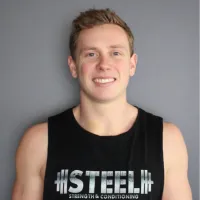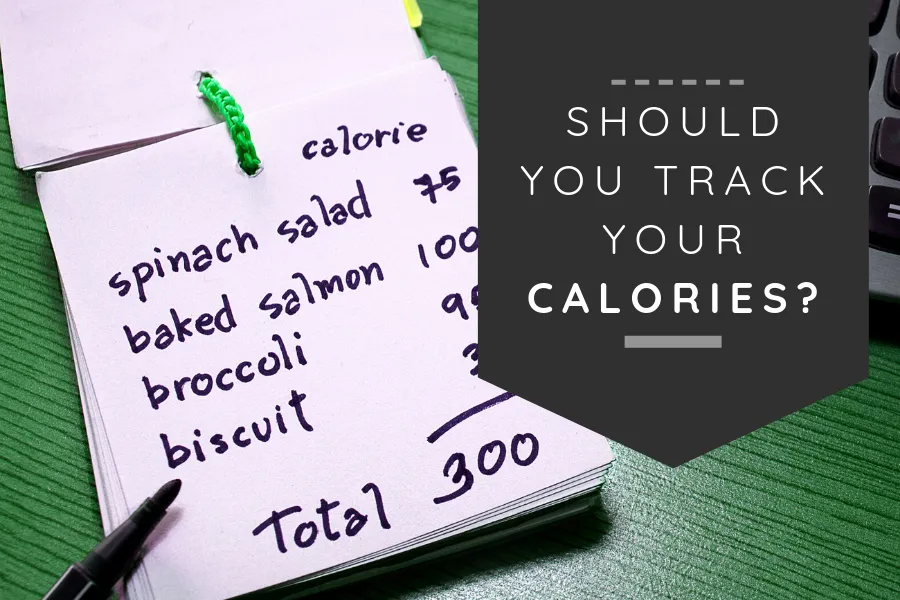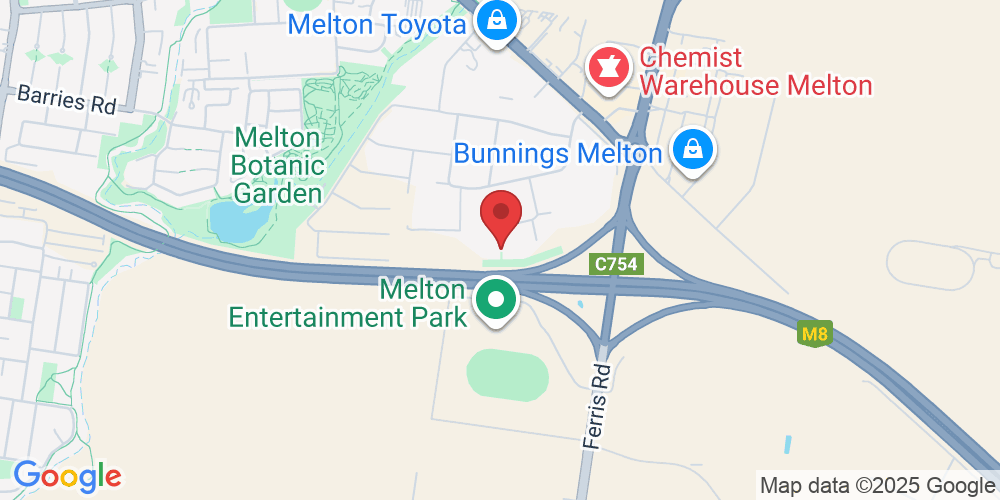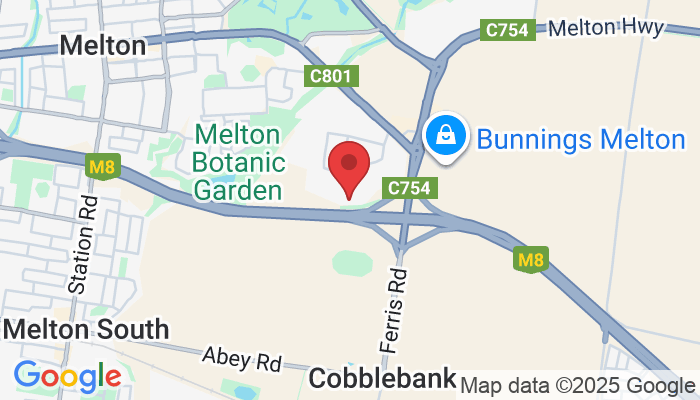Articles
Discover the latest fitness tips, workout advice, and updates from FIT40 Melton. Our blog is designed to keep you informed and inspired on your fitness journey.
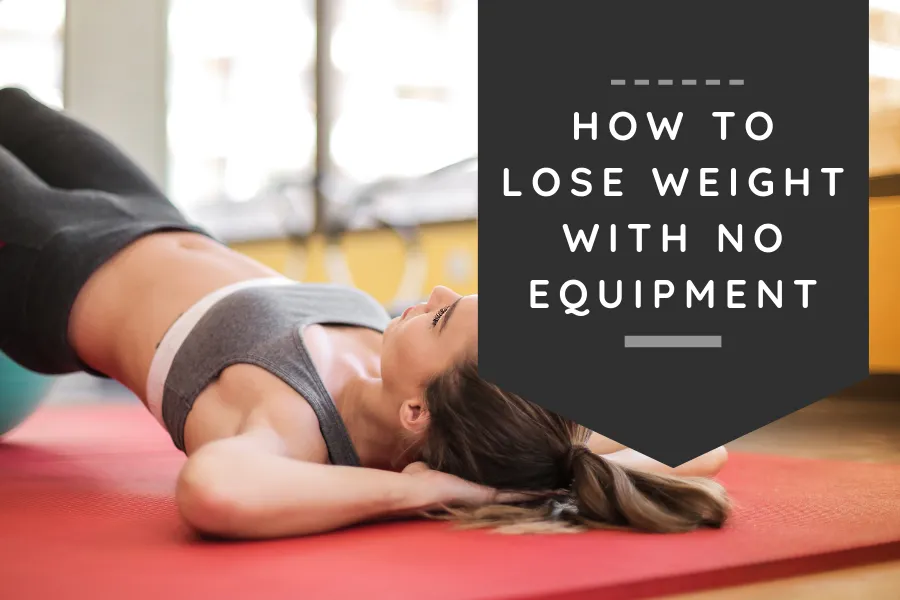
How To Lose Weight With No Equipment
“If you have a well-designed program you can still get phenomenal results and lose weight with no equipment right from your own home.”
Working out from home has plenty of challenges.
There’s no real distinction between relaxing and working out. You have to go from sitting on the couch to jumping around your lounge room in the blink of an eye. It can be tough to flick the switch and change your mindset.
I would definitely encourage you to get your workout done before you even start lounging around… but that’s an article for another day.
Besides the fact that the environment isn’t that conducive for hard workouts; you probably lack equipment as well.
The gym has all these fancy toys. You’ve got barbells, dumbbells, machines, cables.. everything!
At home you’ve got 2 cans of soup and a yoga mat. How the hell are you going to lose weight?
Easy, actually!
You don’t need fancy equipment and sweaty, used machines to get a good workout in. And you definitely don’t need those things to lose weight.
Weight loss occurs from a negative calorie balance. You need to eat less calories than you burn. You can achieve this many different ways, including right from your own home.
We first need to detach ourselves from the fancy equipment and understand that the person makes the workout great, not the equipment.
You can have the greatest facility in the world, access to all the best equipment and still have a terrible program that doesn’t produce results.
Meanwhile the guy over there with basic, or even no equipment, but a great program will get fantastic results.
So, fear not, you too can get amazing results with little or no equipment, right from your own home.
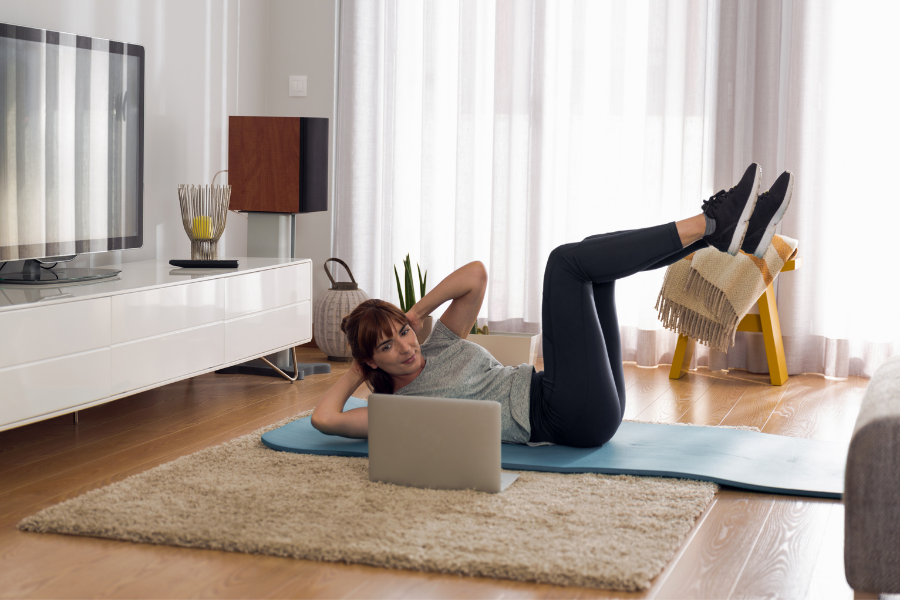
Daily Activity
Your workout takes maybe 30-60mins each time you train? 2-5 times per week? That’s not a lot of time in the grand scheme of things.
In fact, if you were to work out 5 times per week for an hour, that’s less than 3% of your total week.
What are you doing for the other 97% of the week?
Yes, a great training program is essential for great results, but you also need to include regular, daily activity into your schedule.
If you train hard but sit on the couch for the rest of the day, you won’t reap all the benefits that you could from your training.
I like to use steps as a measure – 10,000 steps is a great place to start.
If you’re getting 10,000 steps per day, you’re fairly active. Even just bumping your daily steps from 6,000 to 10,000 would yield some nice results for most people.
So, start here. Monitor your steps for a few days and see where you land. If you notice you’re quite low, make a dedicated effort to bump those steps up with a walk or 2 each day.
You don’t have to try to break any records or anything, just go for a nice stroll and bank those steps.
Nutrition
Daily activity and energy OUT is one side of the equation, what you eat and energy IN is the other.
All the activity and training in the world can be undone by a poor diet. You still need to eat appropriately for your goals.
Start with your protein target.
Whether you’re trying to lose weight or build muscle, protein is the most important macronutrient for you.
It helps you to maintain or even build muscle while you lose fat.
It helps you to feel fuller for longer when you eat.
It helps you to recover and feel better after workouts.
It helps you to keep your total food volume in check each day.
Aim to get 1.5-2g of protein per kilo of your goal bodyweight.
If you’re currently 80kg and trying to get down to 70kg, you would aim for 105-140g of protein per day.
Once you’ve locked your protein in, focus on consuming 10-15% less calories than your maintenance calorie number.
Your maintenance calorie intake is where your body stays the same. You don’t gain weight or lose weight. If you eat more than this number, you gain weight. If you eat less, you lose weight.
Now, why don’t you just cut your calories in half then?
Because that’s a recipe for disaster. You’ll feel like shit. You’ll be starving all the time. You’ll perform terribly. And you’ll rebound harder than you can imagine and end up in a worse position than you were before.
Start with a 10-15% reduction in calories to make it sustainable and permanent.
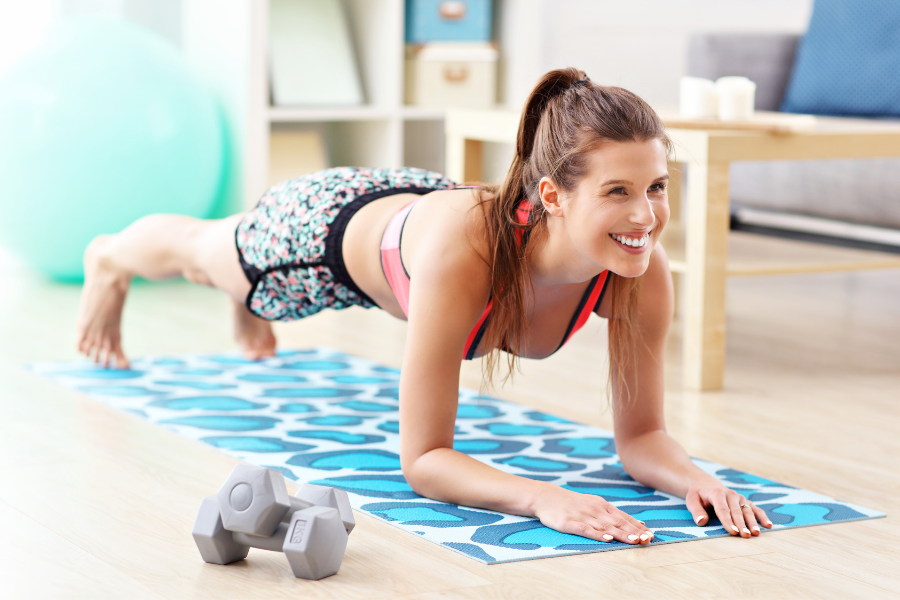
Exercise Appropriately
There are hundreds if not thousands of home workout programs out there. Unfortunately, the 2020 pandemic has brought the true lack of education, care and thought from most trainers to the forefront.
People were putting out programs for you to leg press your couch. Use your dining room table as a sled. They were even using poor puppies as weights to deadlift with.
Not even as a joke. These were all serious exercises these trainers made from home.
What any good trainer knows though, is that getting great results doesn’t solely rely on moving more weight. You don’t have to progress from lifting your office chair, to your lounge room chair, to your couch to get stronger.
There’s better, and safer ways to do it.
First of all, bodyweight movements are wildly underrated. Beginner or advanced, you can get great results with bodyweight movements.
If you can perform a movement with good form anywhere between 1-25 reps, you’ll get stronger and build muscle – which is key for losing weight.
If a movement is quite easy, instead of lifting a teddy bear (yes this was on someone’s program – a freakin’ teddy bear!), slow the movement down, you don’t have to add weight.
Tempo is the speed of the movement you’re performing. Try slowing down parts of the lift, or even pausing in the lift to make it more challenging.
Your muscles don’t know how much weight you’re lifting. They don’t know if you’re doing a really hard push up or bench pressing 60kg. As long as you make it challenging enough, you’ll get great results.
I like to use a 33×1 tempo for a lot of bodyweight movements. This means you go down slowly for 3 seconds, pause at the bottom for 3 seconds, explode up as normal and then reset for 1 second.
You can turn an easy set of 30 push ups into 10 with this method.
Negatives are similar to manipulating tempo. With negatives though, you’re concentrating on the lowering, or eccentric portion, of the lift.
We’ll stick with the push up example. A negative push up would be where you lower yourself down for a nice and slow count of 5-10 seconds. Then you relax at the bottom, you don’t have to push up normally.
Reset to the top and go again for 5-10 reps.
If you can’t yet do push ups on your toes, this is a great progression to help you build the necessary strength. Lower yourself down on your toes slowly and then push yourself up on your knees.
Isometrics
Finally, you can use isometrics to build strength and burn fat with no equipment. This is where you squeeze your muscles but aren’t moving.
Think of a plank or a wall sit. Your muscles are firing to keep you from falling but you’re not moving up and down through a range of motion.
These are great to get you recruiting all your muscle fibres and another way to mix things up at home with no equipment.
Training from home doesn’t have to be all about jumping on your couch and doing weird stuff from home to pretend you have weights.
If you have a well-designed program you can still get phenomenal results with no equipment right from your own home.

How To Lose Weight With No Equipment
“If you have a well-designed program you can still get phenomenal results and lose weight with no equipment right from your own home.”
Working out from home has plenty of challenges.
There’s no real distinction between relaxing and working out. You have to go from sitting on the couch to jumping around your lounge room in the blink of an eye. It can be tough to flick the switch and change your mindset.
I would definitely encourage you to get your workout done before you even start lounging around… but that’s an article for another day.
Besides the fact that the environment isn’t that conducive for hard workouts; you probably lack equipment as well.
The gym has all these fancy toys. You’ve got barbells, dumbbells, machines, cables.. everything!
At home you’ve got 2 cans of soup and a yoga mat. How the hell are you going to lose weight?
Easy, actually!
You don’t need fancy equipment and sweaty, used machines to get a good workout in. And you definitely don’t need those things to lose weight.
Weight loss occurs from a negative calorie balance. You need to eat less calories than you burn. You can achieve this many different ways, including right from your own home.
We first need to detach ourselves from the fancy equipment and understand that the person makes the workout great, not the equipment.
You can have the greatest facility in the world, access to all the best equipment and still have a terrible program that doesn’t produce results.
Meanwhile the guy over there with basic, or even no equipment, but a great program will get fantastic results.
So, fear not, you too can get amazing results with little or no equipment, right from your own home.

Daily Activity
Your workout takes maybe 30-60mins each time you train? 2-5 times per week? That’s not a lot of time in the grand scheme of things.
In fact, if you were to work out 5 times per week for an hour, that’s less than 3% of your total week.
What are you doing for the other 97% of the week?
Yes, a great training program is essential for great results, but you also need to include regular, daily activity into your schedule.
If you train hard but sit on the couch for the rest of the day, you won’t reap all the benefits that you could from your training.
I like to use steps as a measure – 10,000 steps is a great place to start.
If you’re getting 10,000 steps per day, you’re fairly active. Even just bumping your daily steps from 6,000 to 10,000 would yield some nice results for most people.
So, start here. Monitor your steps for a few days and see where you land. If you notice you’re quite low, make a dedicated effort to bump those steps up with a walk or 2 each day.
You don’t have to try to break any records or anything, just go for a nice stroll and bank those steps.
Nutrition
Daily activity and energy OUT is one side of the equation, what you eat and energy IN is the other.
All the activity and training in the world can be undone by a poor diet. You still need to eat appropriately for your goals.
Start with your protein target.
Whether you’re trying to lose weight or build muscle, protein is the most important macronutrient for you.
It helps you to maintain or even build muscle while you lose fat.
It helps you to feel fuller for longer when you eat.
It helps you to recover and feel better after workouts.
It helps you to keep your total food volume in check each day.
Aim to get 1.5-2g of protein per kilo of your goal bodyweight.
If you’re currently 80kg and trying to get down to 70kg, you would aim for 105-140g of protein per day.
Once you’ve locked your protein in, focus on consuming 10-15% less calories than your maintenance calorie number.
Your maintenance calorie intake is where your body stays the same. You don’t gain weight or lose weight. If you eat more than this number, you gain weight. If you eat less, you lose weight.
Now, why don’t you just cut your calories in half then?
Because that’s a recipe for disaster. You’ll feel like shit. You’ll be starving all the time. You’ll perform terribly. And you’ll rebound harder than you can imagine and end up in a worse position than you were before.
Start with a 10-15% reduction in calories to make it sustainable and permanent.

Exercise Appropriately
There are hundreds if not thousands of home workout programs out there. Unfortunately, the 2020 pandemic has brought the true lack of education, care and thought from most trainers to the forefront.
People were putting out programs for you to leg press your couch. Use your dining room table as a sled. They were even using poor puppies as weights to deadlift with.
Not even as a joke. These were all serious exercises these trainers made from home.
What any good trainer knows though, is that getting great results doesn’t solely rely on moving more weight. You don’t have to progress from lifting your office chair, to your lounge room chair, to your couch to get stronger.
There’s better, and safer ways to do it.
First of all, bodyweight movements are wildly underrated. Beginner or advanced, you can get great results with bodyweight movements.
If you can perform a movement with good form anywhere between 1-25 reps, you’ll get stronger and build muscle – which is key for losing weight.
If a movement is quite easy, instead of lifting a teddy bear (yes this was on someone’s program – a freakin’ teddy bear!), slow the movement down, you don’t have to add weight.
Tempo is the speed of the movement you’re performing. Try slowing down parts of the lift, or even pausing in the lift to make it more challenging.
Your muscles don’t know how much weight you’re lifting. They don’t know if you’re doing a really hard push up or bench pressing 60kg. As long as you make it challenging enough, you’ll get great results.
I like to use a 33×1 tempo for a lot of bodyweight movements. This means you go down slowly for 3 seconds, pause at the bottom for 3 seconds, explode up as normal and then reset for 1 second.
You can turn an easy set of 30 push ups into 10 with this method.
Negatives are similar to manipulating tempo. With negatives though, you’re concentrating on the lowering, or eccentric portion, of the lift.
We’ll stick with the push up example. A negative push up would be where you lower yourself down for a nice and slow count of 5-10 seconds. Then you relax at the bottom, you don’t have to push up normally.
Reset to the top and go again for 5-10 reps.
If you can’t yet do push ups on your toes, this is a great progression to help you build the necessary strength. Lower yourself down on your toes slowly and then push yourself up on your knees.
Isometrics
Finally, you can use isometrics to build strength and burn fat with no equipment. This is where you squeeze your muscles but aren’t moving.
Think of a plank or a wall sit. Your muscles are firing to keep you from falling but you’re not moving up and down through a range of motion.
These are great to get you recruiting all your muscle fibres and another way to mix things up at home with no equipment.
Training from home doesn’t have to be all about jumping on your couch and doing weird stuff from home to pretend you have weights.
If you have a well-designed program you can still get phenomenal results with no equipment right from your own home.
KICKSTART
YOUR
FITNESS
RIGHT NOW!
GET YOUR FREE GUIDE NOW
KICKSTART
YOUR
FITNESS
RIGHT NOW!
GET YOUR FREE GUIDE NOW

© FIT40 Melton 2025
Privacy Policy | Terms of Use

